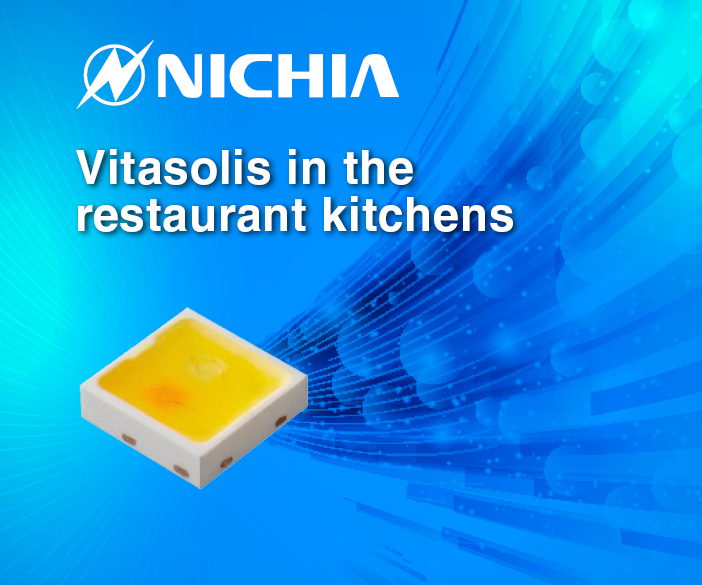
Cooking with light accurately simulating daylight
What level of benefits can LED lighting provide to kitchens within restaurants? The answer can be found in a couple of lighting projects which were recently presented at the “Roadshow 30 years of blue LED Nichia” in Milan, event co-hosted by Welt Electronic to celebrate the 30th anniversary of Nichia’s high brightness Blue LED.
Particularly passionate cooking professionals work in the kitchens of “Les Deux” and “Grüne Gans”: the owners of the two stylish gourmet locations in Germany not only want to delight the palates of their guests, but also the mood and productivity of their kitchen teams. With scientific support and LED technology from Nichia, lighting concepts have been created to ensure motivation at the stove and satisfaction for guests in their dining rooms.
We eat first with our eyes: this is true especially in “haute cusine”, where artfully presentations on the plates of the guests promise the highest pleasure. What lovers of the “haute cusine” often don’t see at first sight is the hard work that goes into every dish.
Stress is the order of the day both in catering kitchens and in Michelin star-rated restaurants. In addition, staff usually have to work in little spaces in high temperatures and in stuffy, humid air where daylight and comfort are in short supply.
Harsh working conditions in poor lighting conditions
The lighting situation in the kitchens of the restaurants “Les Deux” in Hochheim am Main and “Grüne Gans” in Kronberg also left much to be desired. Outdated lighting technology, flickering and poorly lit kitchen areas made work difficult for the kitchen teams at both restaurants.
In work environments where daylight is lacking and artificial light is not an adequate substitute, people quickly become tired. This is a particular problem in restaurant kitchens, as the stressful shifts for kitchen staff often start in the evening hours and they end late at night when the last diners leave the restaurant.
Due to the typical extreme working conditions in restaurant kitchens, the shortage of skilled workers and the Coronavirus disease (COVID-19) aftermath, many managers today are struggling to find new staff. But instead of improving work conditions, many restaurant’s owners focus only on purchasing new equipment and improving the energy efficiency of their kitchens.
In all of this, lighting is often neglected in the process. In the case of “Les Deux” and “Grüne Gans” restaurant, however, lighting played the main role when the owners were considering measures to motivate their kitchen teams and attract new staff.
A light similar to natural light for restaurant kitchens
Together with LED manufacturer Nichia, Jennifer Dienstbach, owner of “Les Deux”, and Claudia Allgaier, owner of the “Grüne Gans” restaurant have modernized the lighting in their restaurant kitchens. The projects were accompanied by Dr. Enrique Strelow and Prof. Dipl. Phys. Werner Lorke, with whom Nichia has already implemented numerous retail projects. Prof. Lorke, with his consulting office iO Interdisziplinäre Objekte, creates, conceives, plans and realizes various projects in the fields of architecture, technology and art. One focus of his work is product and exhibition design. Dr. Strelow deals with light from a neuroscientific approach. Based on their experiences with Nichia‘s LED technology, they also relied on the Japanese manufacturer’s products in the two restaurant kitchens.
For the lighting of the two kitchens, they chose Vitasolis, a LED technology with near-natural light spectra and high energy efficiency. Compared to other LED products, the cyan content of Vitasolis is particularly high, which has a positive effect on people’s biorhythms. “Vitasolis promotes the productivity of kitchen staff and illuminates objects cleanly. The technology allows for brilliant white light and provides a broad wavelength spectrum for comfortable illumination,” says Dr. Strelow, listing just a few of the LED’s benefits.
In both the restaurant kitchens, Vitasolis provides a high level of visual comfort and a natural light that significantly improves the motivation of the kitchen staff. “The light of Vitasolis not only does not strain the eyes, but stimulates people, makes them more alert and productive, inspires and motivates them”, concludes Strelow.
In addition to Vitasolis, in both “Les Deux” and “Grüne Gans” restaurant is also used Optisolis. Their color temperature of 3.000 Kelvin corresponds to sunlight around 5pm, when the biorhythm gradually quiets down. Optisolis technology is used when the team is at the end of their work and the kitchen staff can start to relax. Thanks to the Optisolis technology, the activating power of Vitasolis subsides within 30 minutes, while the production of the “sleep hormone” melatonin increases. To make optimal use of the light according to the different needs of the kitchen, wireless control via Casambi technology is possible.
Functional luminaires without compromise
The conversion took place during ongoing operations and was completed in less than a day. This is thanks to the work of Prof. Lorke, who designed the luminaires to meet the high requirements of a professional kitchen, without compromising on lighting quality.
Before the conversion, classic damp-proof luminaires were used, on which dirt was easily deposited. The goal with the lighting update was to create surfaces that were easier to clean and to use robust materials that could withstand even oily vapors. In addition, the lights were to be as leak-proof as possible.
In Grüne Gans, low ceilings added the requirement to use low-profile luminaires. Lorke therefore developed luminaires with a mounting height of only 25 millimeters, including the power supply unit. The flat luminaires are mounted under the wall units in the kitchen, which incidentally also improved the ergonomics in the kitchen. In order to avoid hotspots despite the low installation height, a side illumination over the edge was chosen. This choice has made it possible to further reduce the amount of LEDs.
“You can realize just about any surface format with this side irradiation,” says Lorke, emphasizing that the light output is sufficiently high even with irradiation from just one edge. The number of luminaires could even be reduced as a result – without compromising on brightness. The lighting solution also provides homogeneous light. “While it is advantageous in retail to create different light areas, in the kitchen this variety can be counterproductive. The eye has to adjust again and again, and that tires the staff,” explains Prof. Lorke, highlighting the advantage of a homogeneous light level.
To avoid glare and use visually appealing luminaires, robust and scratch-resistant mineral glass is often used in the lighting area – but glass luminaires are taboo in kitchens. Prof. Lorke therefore used special acrylic glass panels that are translucent, smooth and easy to clean. If the luminaires do require thorough cleaning, they can be easily removed because they are attached to the ceiling with magnetic brackets instead of a complicated screw connection.
Modern LED technology brought to life
With little effort, the kitchen conversion achieved improved working conditions in a short time. “The response was unanimously positive”, says Lorke. However, when the remodeling began, the restaurant owners and their teams had no idea of the impact lighting would have on their work.
“Most people don’t realize the incredible importance of light, and many of them don’t know how big the differences in quality actually are,” says Dr. Strelow, adding, “It’s only in practical use that the outstanding quality of Nichia LEDs can be experienced.” The technology not only plays out its advantages in the hospitality industry – it is also suitable for lighting in offices, schools or healthcare facilities, where improving circadian rhythms plays a key role.
Interested luminaire manufacturers can simply use Vitasolis as a chip replacement in existing designs, with no changes to performance, driver compatibility, beam shape or safety testing. Users can not only achieve positive effects for employees or customers, but also circumvent rising energy costs by converting to LED.
And, even in view of the imminent ban on fluorescent lamps, the switch to modern LED technology can only prove to be a smart decision. With a replacement instead of a retrofit, operators of restaurants or other facilities benefit twice: they not only comply with current legislation, but also improve their lighting at the same time.
A difference you can also taste
Positive lighting experiences are needed for a rethink about lighting on the part of users and luminaire manufacturers. In the restaurant kitchens of “Les Deux” and “Grüne Gans”, the rethinking has already taken place. The advanced lighting concepts now provide kitchen staff with high quality and uniform light.
Under the modernized light, the cooking professionals can immediately see the results of their work and they can give guests a unique emotional experience.

